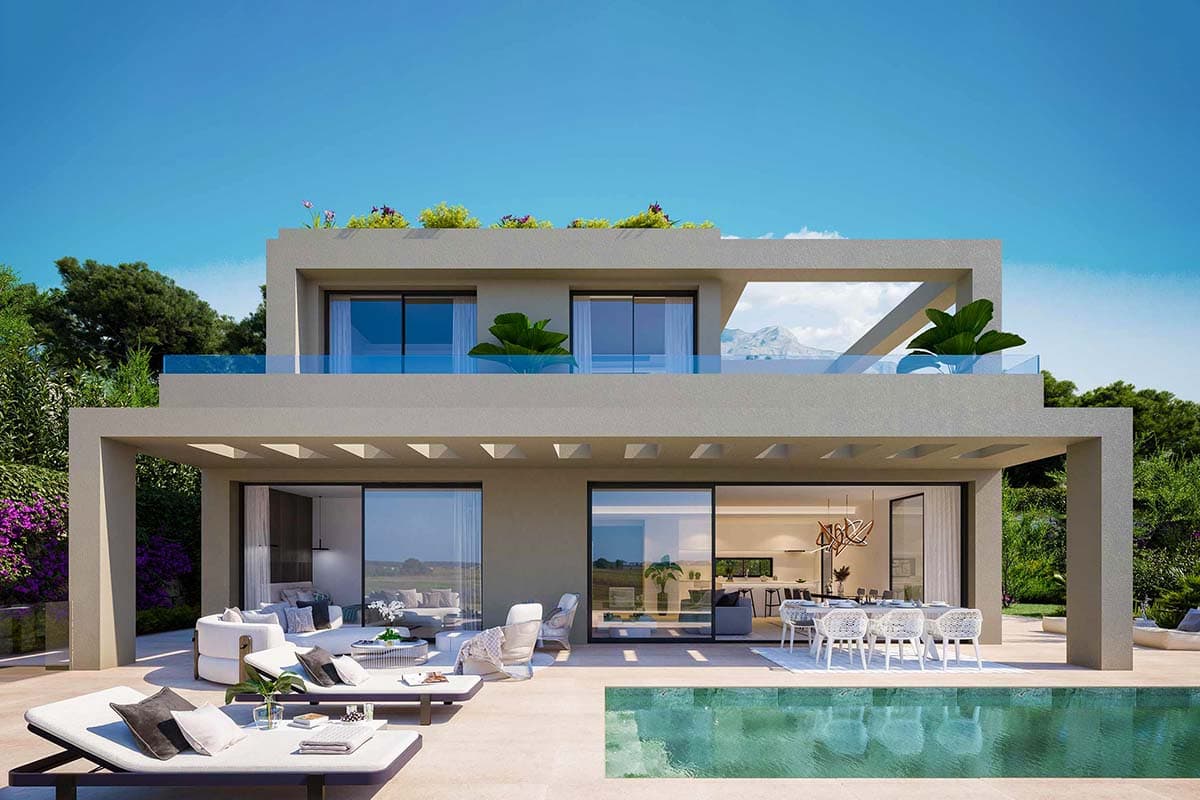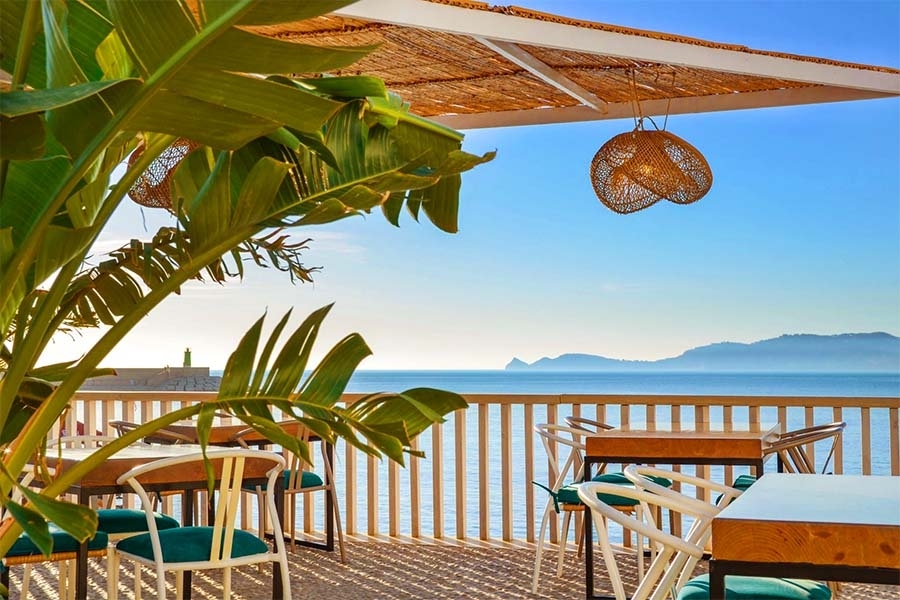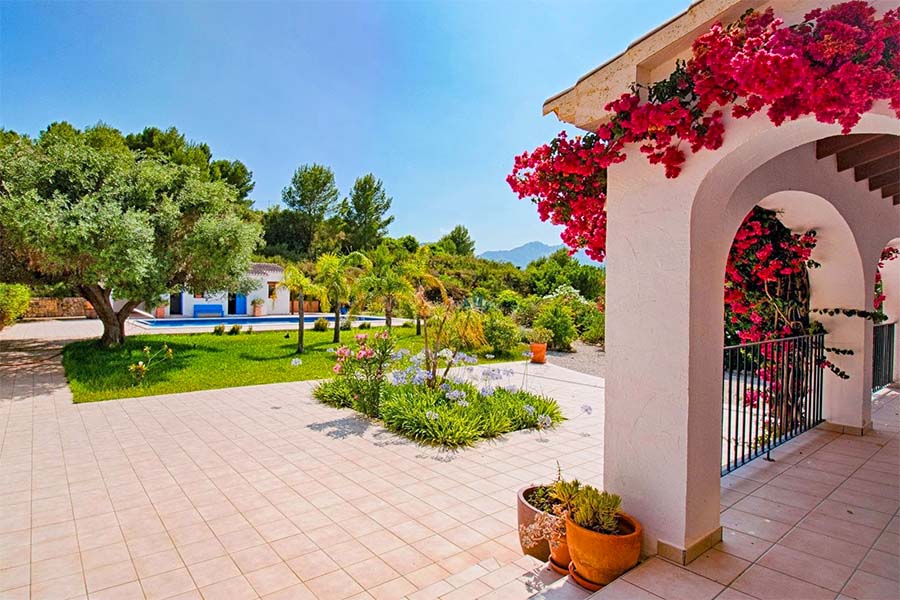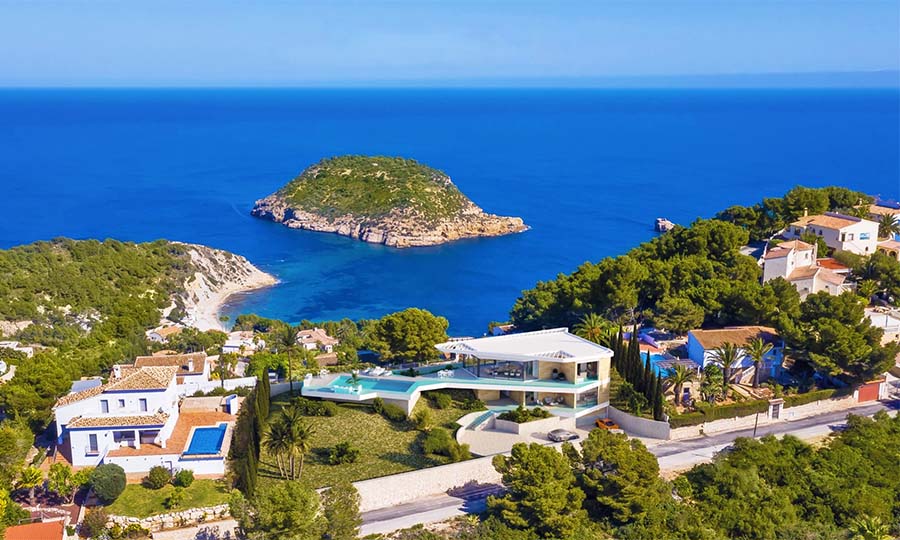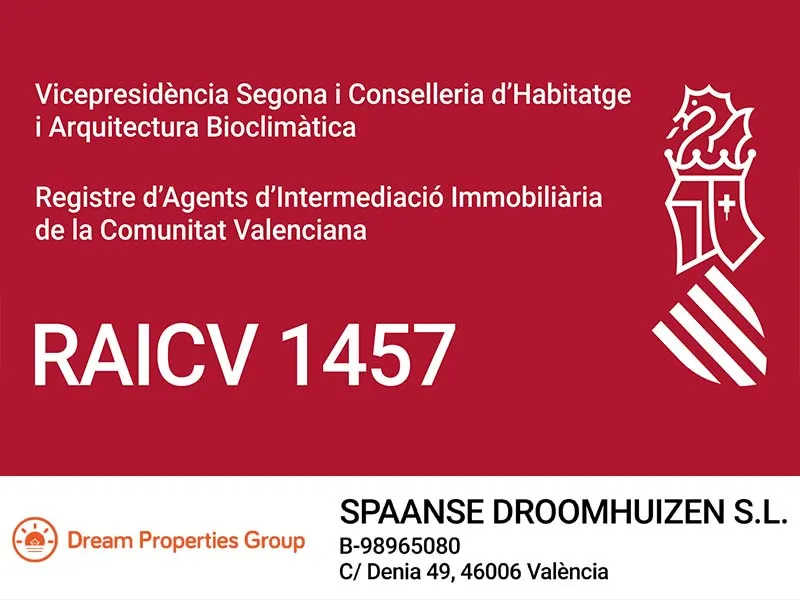New construction in Spain; the choice is huge!
A finca, a Spanish-style apartment or perhaps a modern villa? The range of properties in Spain is huge and we notice that many people opt for new construction when purchasing a property in Spain, despite the charms of the many Spanish fincas. And not with no reason, because it is of course wonderful to be the first owner of a house under the Spanish sun. If you choose to build completely yourself, then you are also the one who determines everything from A to Z. And not to forget, a modern style is of course also completely up to date. And where there is a lot of demand, there is also a lot of supply and that is why we say: the possibilities for new construction in Spain is huge!
The search for new construction
We can offer new construction in almost all regions in Spain. Think of the coast of the Costa del Sol, the Costa Blanca South or the Costa Calida. But you can also often find beautiful new-build projects slightly off the coast where the prices are often slightly more favorable. For example, compare the possibilities of new construction or custom building a home close to the coast of the Costa Blanca North with the prices of homes located just a little more inland; you will be amazed at the possibilities. The location also largely determines the price. Of course, it is also true that the prices in certain regions are slightly higher than in other regions of Spain. This is the case, for example, with the prices of new construction on the coast of the Costa del Sol; here you pay a little more for a new-build home or for the realization of your custom home. But do not be sad; if the prices are above budget, there are still good alternatives to be found. In that case, ask us, for example, to take a look at the possibilities of new construction on the Costa Blanca South.
How to get started
You have determined the region and location and you are now sure that you would like to purchase a modern new-build home under the Spanish sun. But what should you keep in mind to get started? When you buy new construction in Spain, you have to pay attention to completely different things than when buying an existing home. If the project is not yet under construction and there are only drawings, it is certainly advisable to have a purchase broker guide you. It is of course very exciting to buy a house from a drawing. There are also a lot of options when it comes to new construction and how do you know which new-build home is the most suitable choice? We know all projects and are happy to assist you. Nothing is more important than getting the best possible advice about the possibilities during the preparation process and in the search.
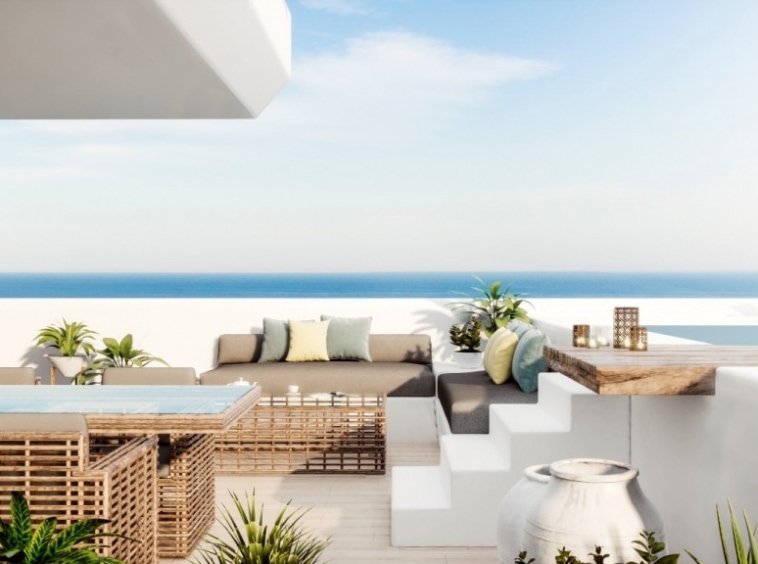
Project construction or building yourself
There are two types of new construction in Spain: project construction and self-build (also called “autopromoción” in Spanish). With project construction, everything is arranged for you. You choose the desired home on the designated plot or part of a complex, the project developer pays the installments during construction and after completion and transfer you receive the keys. Of course, in project construction it is sometimes possible to adapt a few things to a home according to taste (think of the choice of materials for the bathroom or kitchen), but the broad outlines are fixed.
With self-build or autopromoción, you, as a buyer and also as a client, determine everything yourself down to the last detail. Of course you will be guided, but you will go through the entire process from A to Z yourself. When you build your own property, you start by choosing the desired location. During viewings, we look for a suitable plot in a good location and we view homes under construction and homes that have been completed. Once you have found the perfect location, the options for the type of construction on the specific plot must be considered. Firstly, the destination plan (Plan General) of the house is looked at. It is checked whether this is ‘urbano’, which means that it is actually allowed to build on the ground. If the plot is in a residential area with other independent villas, there are usually sewage, street lighting and often even telephone connections or sometimes gas pipes. If the plot is more remote, you should take into account that the waste water is discharged via a septic tank and that the plot must contain at least 10,000 square meters in order to be eligible for the construction of a house. It is therefore very important that before the actual purchase of the plot, the architect (and lawyer) examines what the options are.
You will then design the villa together with an architect, depending on the possibilities of the specific piece of land. You can think of selecting tiles and choosing color combinations, the layout of the house and the location of the swimming pool. Prices are discussed and a construction contract is drawn up. It is advisable to provide your lawyer (which is of course always important in Spain, see more information about this under legal advice) with a power of attorney so that you do not have to come to Spain for every signature. While a bank guarantee is important with every payment for project construction, this is not the case with self-construction. With self-build you are the “project leader” and owner of the plot and the house that is built on it. In the case of project construction, the project developer remains the owner of the project until the transfer. The architect works out the design, after which the building permits can be requested from the municipality. The duration of this application varies per municipality. The license can sometimes be arranged quickly, but the application can also take a year or more. After the building permit has been issued, construction can start. During the entire construction, the architect will issue a certificate for each construction phase, after which you must meet the following payment term.
After completion of the construction, the architect draws up the ‘Final de Obra’ document to indicate that the construction has been completed. Someone from the municipality will come by to check whether the construction has been carried out correctly and according to the guidelines. If everything is in order, the “Licencia de Primera Ocupación” or the residence permit is issued. Your lawyer will also arrange the “Escritura de Obra Nueva” for you. With this, the villa is added to the plot and everything can be registered as a whole in the owner’s register or the land registry.
In the case of project construction, the project developer is also obliged to provide a ten-year warranty on the construction. This is not the case with self-build. As the owner and project developer of the project, you have the choice to take out warranty insurance. In practice, many people choose not to do this. This is partly due to the additional costs of soil investigation and the premium that must be paid for the guarantee insurance. Also, many people who build themselves do not find it necessary to take out warranty insurance because they do not immediately intend to sell the new villa within ten years. If they do so within ten years of delivery, the new buyer must still be provided with warranty insurance for the remaining number of years.
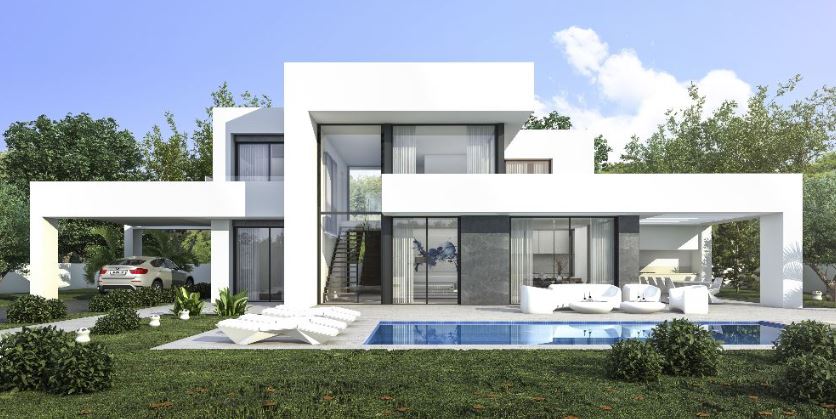
Building yourself or project
We can imagine that you ask yourself: is it better to build yourself or to opt for project construction? With self-build, the total costs depend on many factors. For example, there is no strict square meter price. And the costs depend on the choice of material and also on the plot and therefore also on the region. You can also expect higher costs for a plot with a slope than for a flat plot. It is true that with self-build you can design everything to your own taste and thus realize your ultimate dream home under the Spanish sun. However, it may be the case that the entire process takes more time since you start from 0. In the case of project construction, the building permit has often already been issued or construction has already started, so that the house will be ready earlier than in the case of self-construction. Sometimes work is also carried out in phases and homes are even key ready.
Points of attention
And what else should you pay attention to? To start with, the so-called “Licencia de Obra”, or the building permit for new construction in Spain, is an indispensable piece of evidence. This permit is issued by the municipality after an architect has registered the project (in the case of project construction) with the municipality. The builder or project developer must comply with the terms of the license. If this does not happen, the municipality will not give approval after completion of construction and therefore no declaration of habitability.
Approval is requested after the architect supervising the construction project issues “final de obra”, which officially indicates to the municipality that the work has been completed. This is necessary because a so-called “licencia de primera ocupación” must be issued, the so-called habitability certificate. Without this license you cannot request utilities such as water and light and the house is therefore not habitable. This is why it is important that your lawyer checks whether all permits are present.
The payment schedule also requires attention. The less you pay during the term of the contract and the more upon completion, the better. It is also important that you receive an aval, or a bank guarantee, for the payments already made. If the developer goes bankrupt, you can at least get the payments back. It is legally required to receive a bank guarantee, but since there are costs involved, the builder sometimes tries to “forget” this. Of course, it is still important for new construction to engage a lawyer to check whether all paperwork is correct and whether all conditions have been met. We understand that it is of course difficult to find a good, independent lawyer if you are not known in Spain. We at Dream Properties International have built up a good network over the years and are happy to help you find the lawyer that suits you best and can guide you legally from A to Z in your own language if necessary.
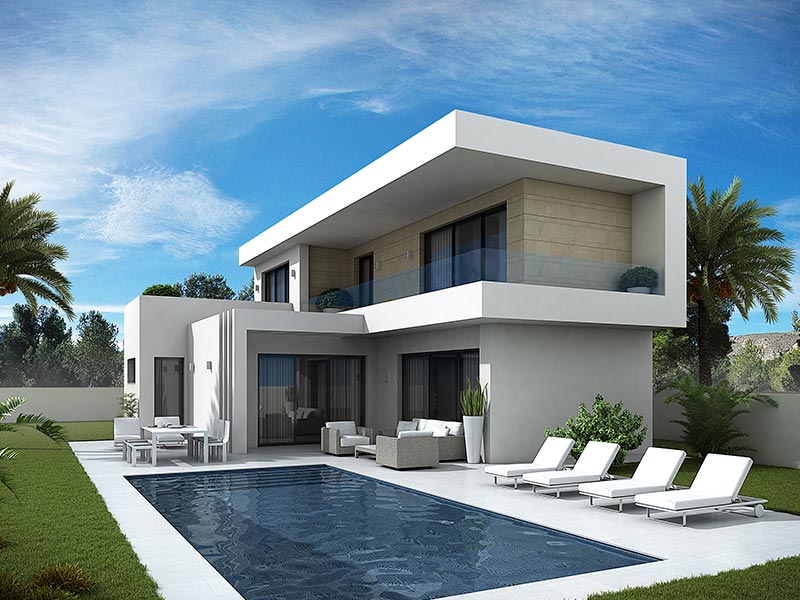
The costs
In general, for new buildings, a reservation amount between 3000 and 6000 euros must be transferred after making a reservation. The property is then (temporarily) taken off the market. When the lawyer gives the green light, the payment must be made in installments. In a number of installments (different per project) a part of the purchase amount will already be transferred. Normally between 30 and 40% of the purchase price and between 30 and 60 days after the deposit is paid.
It is important here that the project developer provides you with a bank guarantee (via your lawyer). The last part of the purchase price is paid by bank check at the notary after completion of the project. In any case, make sure that you receive an overview of the payment terms in advance so that you are not faced with surprises afterwards and during construction. The transfer will take place when the project has been completed and has been provided with a habitability certificate. For the transfer, we start from the same crossing principle. You receive the key and the project developer receives your bank checks with the remaining amount.
For new construction, one does not speak of 10% transfer tax but of 10% VAT, or in Spanish IVA. This percentage was initially considerably lower, but has increased considerably after the Spanish crisis of 2008. The additional costs for the notary (approximately 1%), your lawyer (1-2%) and any broker’s commission (depending on the region) are also equal to existing buildings for new construction. For a complete overview, please also take a look at the information about the buying process.
In the case of new construction, there is also an AJD (Impuesto sobre Actos Jurídicos Documentados) tax. This stamp tax varies from 0.5% to 1.5% and differs per province and even per municipality. With a second home in Spain (and therefore not with permanent residence) you can assume a 1.5% AJD tax for new construction.
If you are going to build yourself, there is also a construction tax (Impuesto sobre construcciones, instalaciones y obras). In addition to the costs of a building permit, the municipality charges building tax on the building costs of the house to be built specified by the architect or contractor. The tax rate differs per region and sometimes also per municipality. You can assume 2% as a basic rate, but keep in mind that this can sometimes be higher. As soon as the house is delivered, and the Escritura de Obra Nueva (deed of new construction) is drawn up, between 0.5% and 1% building tax must also be paid to the municipality on the value of the house included in the Escritura. This percentage also differs per municipality. It is in any case important to hire a good and independent lawyer so that a good summary of all expected costs is made.
Whether you opt for project construction or self-build, Dream Properties International are happy to help you. We have access to all new construction projects and plots as well as contact with the best architects, builders and lawyers in all regions of Spain. We are happy to make sure that you can sit back with peace of mind during the entire purchase process. And of course we like to pop a good bottle of cava together after purchase. Nothing is more fun than buying a home in Spain and enjoying it comes first. See you soon in Spain?!


